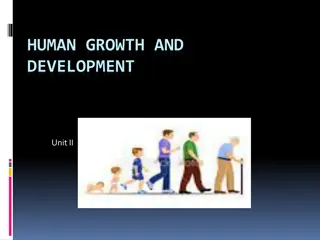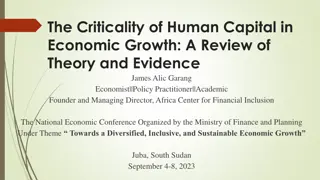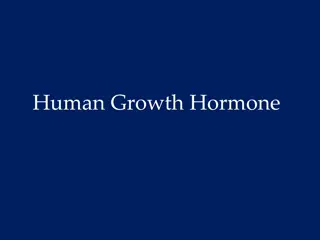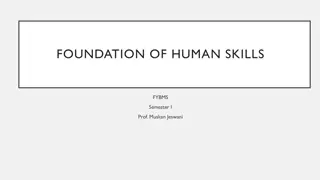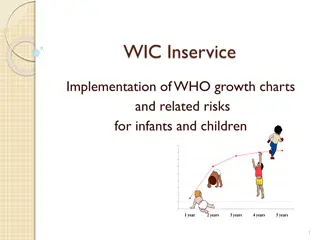Understanding Human Growth and Development
Human development encompasses growth, maturation, and learning processes that shape behavior over time. Growth involves quantifiable physical changes such as increased size or power, while maturation relates to the intellectual and emotional development influenced by genetics. These innate processes set the foundation for behavior patterns, although environmental factors like experiences and opportunities also play a crucial role in determining actual behavior outcomes.
Download Presentation

Please find below an Image/Link to download the presentation.
The content on the website is provided AS IS for your information and personal use only. It may not be sold, licensed, or shared on other websites without obtaining consent from the author. Download presentation by click this link. If you encounter any issues during the download, it is possible that the publisher has removed the file from their server.
E N D
Presentation Transcript
Fundamentals of Human Growth & Development Dr. ImranA. Sajid Disclaimer: A significant part of these slides is based on the works of ChanchadII on Slideshare at https://www.slideshare.net/Chanchad11/introduction-to-human-growth-development
FUNDAMENTALS Developmental psychology [is] the study of the patterns of growth and change that occur throughout life (Feldman, 2008: 399).
FUNDAMENTALS Human Development is the scientific study of the quantitative and qualitative ways by which people change over time.
DEVELOPMENT is the way that people grow and change as they age. This determine one s behaviour. Components of Development 1. Growth 2. Maturation 3. Learning
1. GROWTH Growth: an increase in numbers, size, power, or intensity GROWTH is the physical process of development, particularly the process of becoming physically larger. It is quantifiable, meaning that it can be measured, and it is mostly influenced by genetics. For example, the year that you were 11, you got taller by two inches. This is an example of growth because it involves you getting physically taller and is quantifiable (two inches). The growth of the body is an important factor in determining the pattern of behaviour.
2. MATURATION On the other hand,MATURATION is the physical, intellectual, or emotional process of development. Maturation is often not quantifiable, and it too is mostly influenced by genetics. For example, as you became older, your brain developed in a way that meant you were able to handle more complex tasks than you could before.
Thus, growth and maturation and processes which produce or fail to produce the necessary basic internal conditions for the appearance of different patterns of behaviour, are innate processes and lay down the limits for behaviour.
While growth and maturation constitute predetermined or predisposing factors, they cannot by themselves, ensure the appearance of different patterns of behaviour. While growth and maturation provide the basic conditions of readiness, the actual level and type of behaviour appears to be determined by environmental factors like experience, stimulations, opportunities etc.
3. LEARNING The changes brought about in behaviour by these factors are described as LEARNING. The process of learning, therefore, refers to those changes in behaviour which can be attributed to experience, practice and stimulation. Learning is the aspect of development that connotes modification of behavior that results from practice and experience.
Life is a changing process. From the moment of conception to the moment of death, human beings undergo many complex processes of development. Through life, people have the potential to grow, to change, to develop.











